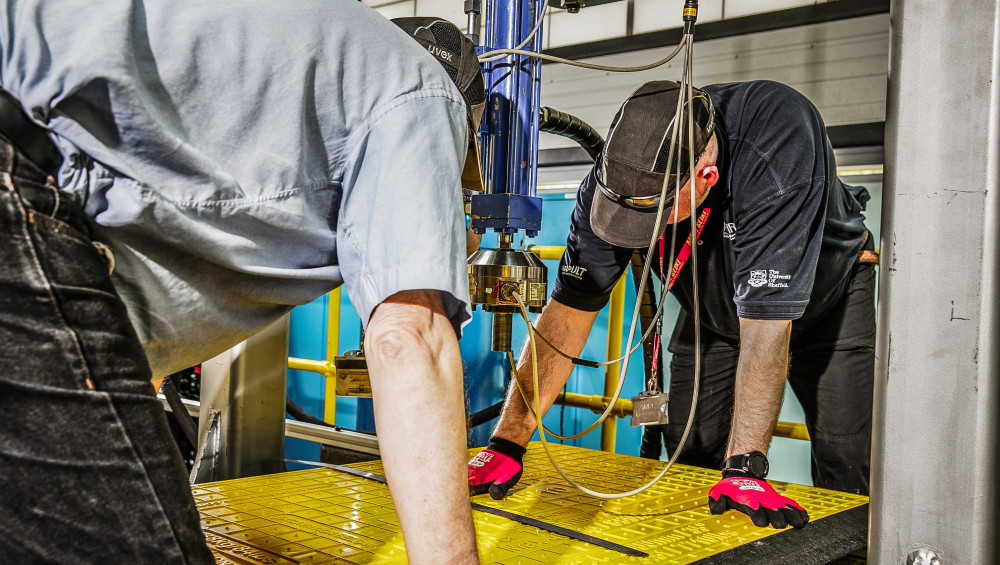OSHA's Definition of a 'Competent Person'

If you're overseeing safety, compliance, or site operations, it’s important to understand the OSHA definition of a competent person could be the difference between a safe, smooth-running job site and serious safety risks - not to mention the costly delays or fines.
Here’s what you need to know.
What Does OSHA Mean by a ‘Competent Person’?
According to the Occupational Safety and Health Administration (OSHA), a competent person is someone who:
“Is capable of identifying existing and predictable hazards in the surroundings or working conditions which are unsanitary, hazardous, or dangerous to employees, and who has authorization to take prompt corrective measures to eliminate them.” 1926.32(f)
This means they’re not just trained to spot danger, they also have the authority to do something about it, right away.
Unlike a general worker with basic health and safety training, a competent person has a deeper level of experience and decision-making power. OSHA doesn’t issue a “competent person” card or certificate the employer decides who qualifies, based on their training, experience, and ability to act.
Key Traits of an OSHA Competent Person
To meet the OSHA competent person definition, someone should be:
- Trained in the standards and safety risks relevant to the job
- Experienced in recognizing hazards specific to the work environment
- Authorized to stop work and fix problems before they cause harm
- Trusted to lead inspections, supervise safety efforts, and report issues
This designation appears in many OSHA standards, especially in construction and excavation.
Where OSHA Requires a Competent Person
Here are just a few OSHA standards where a competent person is required:
|
Task or Situation |
OSHA Standard |
|
Trenching and Excavation |
1926.651 & 1926.652 |
|
Scaffolding |
1926.451 |
|
Fall Protection |
1926.500 |
|
Confined Spaces |
1926.1207 |
|
Demolition |
1926.850 |
Having a competent person assigned in these areas isn’t optional, it’s a legal requirement to protect workers and meet compliance.
What Does the Osha Standard Numbers Mean?
OSHA standard numbers are part of the Occupational Safety and Health Administration's (OSHA) system for organizing and referencing its safety and health regulations. These numbers are used to identify specific rules and requirements that employers must follow under U.S. federal law.
Why the Competent Person Role Matters
Competent persons are your first line of defense against accidents, delays, and fines. Without someone on site who can actively assess and manage safety risks, you’re leaving your workers vulnerable – and your project exposed to serious liabilities.
With the right tools and training, competent persons can:
- Prevent injuries and fatalities
- Identify hazards before they escalate
- Ensure your site stays OSHA-compliant
- Maintain productivity with fewer disruptions
And when paired with the right safety equipment – like modular trench covers, ground protection mats, and secure fencing – they create a site that’s truly safe, efficient, and built to last.
Support Your Competent Person with the Right Equipment
At Oxford Plastics, we manufacture safety-first site equipment that helps competent persons do their jobs effectively. From ground protection mats to trench safety solutions, our products support safer, smoother worksites across the US and beyond.
Ready to Strengthen Site Safety?
Empower your competent persons with equipment that’s easy to install, built to last, and compliant with US safety standards.
Related News
How Oxford Plastics Supports Safer Streets Across the US
Across the United States, contractors, utility teams and municipal authorities face increasing pressure to keep workers safe,...

An Industry Guide to LowPro Road Plates and Trench Covers
Across construction and utilities in gas energy, waste-water, water suppy and fibreoptic works, keeping people safe and sites...

The Kit List That Keeps Your Team Safe (and You Covered)
When it comes to running a safe, compliant, and efficient site, the right kit can make all the difference. From managing foot...